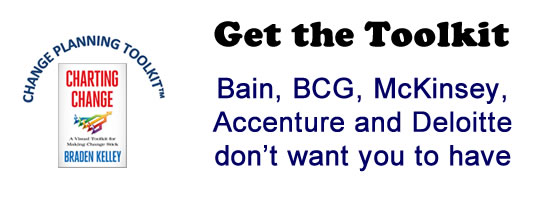Team Agility and Business Innovation:Â Agile Boundary Paradoxes

A new study conducted by Censuswide, sponsored by Ricoh Europe, examines the challenges and opportunities in establishing more agile and flexible businesses. Top of the list is regulation (39%), followed by lack of investment in new technologies (37%) and inescapably rigid internal hierarchies (35%) according to the 2,140 business leaders surveyed.
Diez-Aguirre VP Corporate Marketing, Ricoh Europe said: “In today’s business environment, using technology to capitalise on new opportunities is key. But this alone isn’t enough. Leaders need to encourage an open-minded culture where employees are empowered to take measured risks. Quick decision-making skills and the ability to rapidly execute are also essential.â€
The good news from the Ricoh report is that 86% of businesses are actively focusing on improving agility. The question remains, why is it so difficult for business leaders trying to foster an agile working environment in their organisations?
I believe it’s due to the challenge of operating an organization that has both a public structure and a private structure. The public structure is observable in the leadership and membership boundaries and roles (organizational structure) and through the relationships and dynamics between the individuals that fulfil these roles (intrapersonal structure). This public structure determines the structure of roles and relationships within the organization. An organization also has a private structure, consisting of interlocking scripts and imagoes. This private structure is determined by the personal wishes, archaic needs and experience of the leadership and the membership. It is visible in the culture of communication in an organization (transactions).
Organizations have a formal structure of roles and hierarchy, which defines the power distribution in an organization and at the same time an informal structure of relationships is at work, which determines the dynamics of influence at work. And underneath all of that, a constellation of transference is at work, profoundly influencing our reactions to leadership, belonging and the culture.
Learning to deal with the structural paradoxes is essential
Every organization has to maintain a dynamic balance between open and closed boundaries to serve their purpose at different times. If the permeability and complexity of the boundaries are not in balance with the turbulence in the environment and dynamics in the organization, the performance and cohesion will suffer.
Decisions about the permeability of one boundary will have consequences for the permeability of other boundaries, and for the performance and cohesion in an organization.
The main task of a senior leadership team or organizational consultants is therefore to manage the “boundary mixing table†to serve the purpose of the organization.
Every organization has to maintain a dynamic balance between open and closed boundaries to serve their purpose at different times. – Sari van Poelje
Leadership of an organizational structure is like being a D.J.

At this level leadership is like being a D.J. with a boundary mixing panel with three switches. You open or close boundaries depending on the purpose of the organization and the dynamics in the environment. For example if the organization’s purpose is to produce at maximum efficiency at the same quality level time after time in a stable environment, the major internal and external boundaries and minor boundaries should be more closed. As a consequence the organization will be characterized by a strong corporate identity, with centralized control and independent business units.
Think of a corporation like MacDonald’s, an international company with affiliates all over the world, that has to produce hamburgers in the same way with the same quality everywhere. They have a relatively stable market, and low level work, so they don’t need a lot of innovative input from the market, and they need a clear hierarchical structure to deal with the routine tasks. All the processes are standardized, so there is little need for delegation of leadership to employees.

Another example is an organization whose purpose is to innovate and remain flexible in a fast moving market, like Apple. In that case it is important to be reactive to the market, and keep a more open external boundary, and encourage interdisciplinary cooperation amongst departments through more open minor internal boundaries. To keep the organization stable with this kind of openness it is important that the leadership remains directive and stable, underpinned with clear processes.
Every opening or closing of one boundary effects the opening or closing of the other boundaries. Every organization has to maintain a dynamic balance between open and closed boundaries to serve their purpose at different times and create an agile business structure.
In the next article we’ll take a look at how aligning the levels vertically moves you closer to an agile business structure.
RATE: Radical Agile Transformation Exercise
Draw a mixing panel with three sliders.

Slider 1: Maintaining corporate identity vs increasing reactivity to market
Slider 2: Maintaining centralised control vs increasing leadership delegation
Slider 3: Maintaining departmental independence vs increasing cross functional interdependence
On the boundary mixing table indicate which is more important to your organisation at the moment.
The more you are into increasing … the more agile you need to be.
Bibliography: References & links
Empowering Digital Workplaces – https://thoughtleadership.ricoh-europe.com/eu/empowering-digital-workplaces-2/
Wait! Before you go…
Choose how you want the latest innovation content delivered to you:
- Daily — RSS Feed — Email — Twitter — Facebook — Linkedin Today
- Weekly — Email Newsletter — Free Magazine — Linkedin Group
 Sari van Poelje has 30 years experience of innovation on the interface of leadership and organizational development, executive coaching and transactional analysis both as a director within several multinationals and as an international consultant. Specialization in creating agile leadership teams and business innovation! She is the author of numerous articles and books on leadership and change.
Sari van Poelje has 30 years experience of innovation on the interface of leadership and organizational development, executive coaching and transactional analysis both as a director within several multinationals and as an international consultant. Specialization in creating agile leadership teams and business innovation! She is the author of numerous articles and books on leadership and change.
NEVER MISS ANOTHER NEWSLETTER!
LATEST BLOGS
How Brexit Has Affected UK E-commerce Businesses
Photo by Zyro on Unsplash The popularity of online shopping was already growing at an impressive rate – and…
Read MoreOvercoming range anxiety: three tips for EV owners
Photo by Jenny Ueberberg on Unsplash In the last few years, electric vehicles (EVs) have become more and more…
Read More



